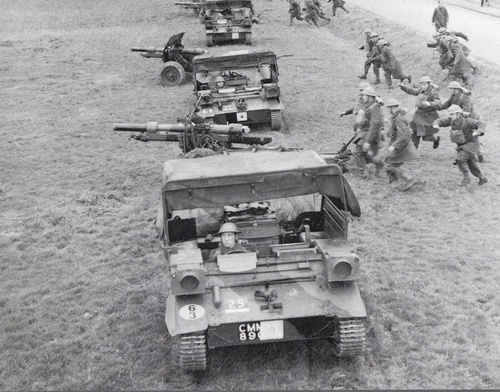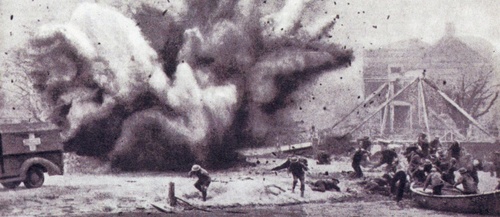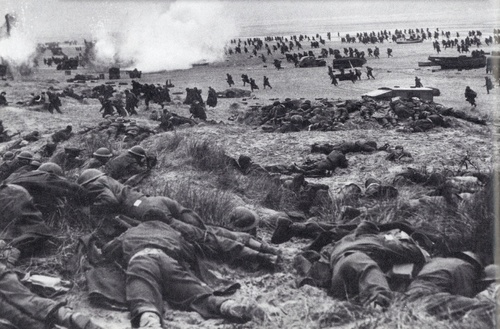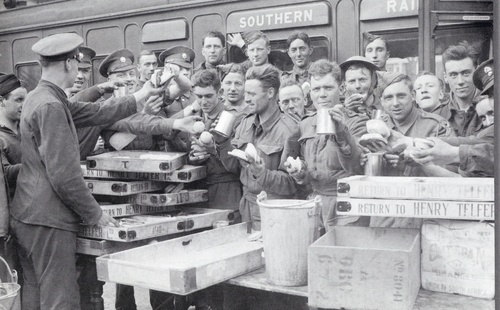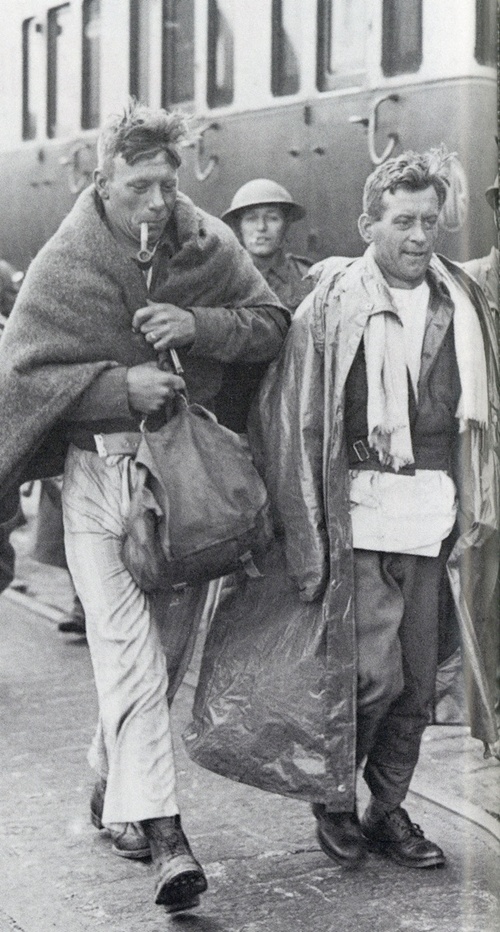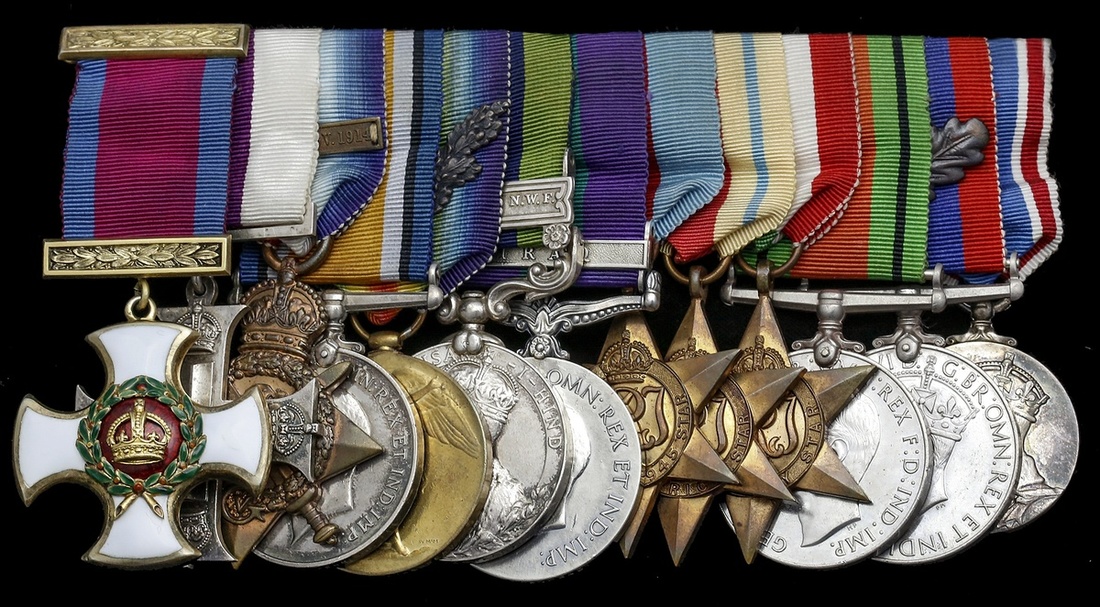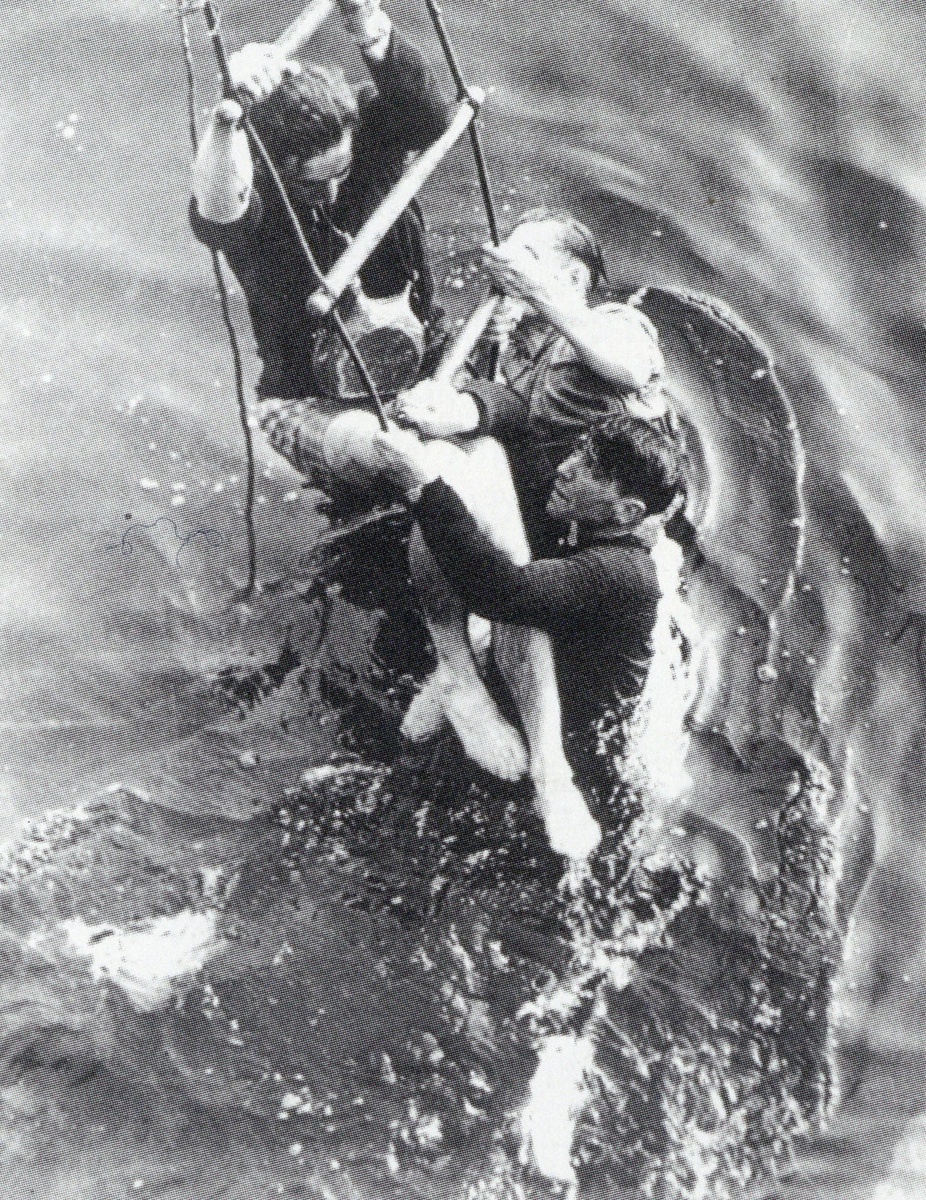Auction: 17002 - Orders, Decorations and Medals
Lot: 326
INTRODUCTION
The cataclysmic events of May and June 1940 have imprinted themselves in very different ways on the historical memory in Britain and France. The world had first observed the type of fast-moving, all-arms manoeuvre warfare that came to be known as Blitzkrieg when German forces invaded Poland in September 1939. In May 1940, British, Belgian, Dutch and French armies were unprepared, out-thought and out-manoeuvred and Allied air forces ill-equipped and under-resourced in the face of the joint-onslaught by the Wehrmacht and Luftwaffe. That some sort of victory was snatched from the yawning jaws of defeat was due to the extraordinary efforts of the Royal Navy - off Dunkirk and elsewhere, the gallantry of the B.E.F.'s rearguard in its last-ditch defence of the Dunkirk perimeter and the activity of the 'Little Ships', whose participation in the Dunkirk evacuation is part of British folk memory.
The Kieran collection well represents the British experience of the Fall of France and Dunkirk but is significant, from the historical perspective, in that it also includes medals associated with the disaster at St Valéry-en-Caux and the evacuation from Le Havre. While both those events, and other evacuations of Allied troops from elsewhere in France in June 1940, were overshadowed by the 'miracle' of Dunkirk at the time, they should not be considered separately in the historical narrative: this is the relevance of the Kieran collection.
While it would be invidious to single out any one of the Armed Services in terms of its contribution to the evacuations from France, there can be no doubt that without the personnel and ships of the Royal Navy, hundreds of thousands of Allied soldiers would have remained in France and become prisoners-of-war. It is difficult to imagine that the British government could have done anything other than surrender in the face of such a disaster. Thus, it is fitting that men of the Royal Navy are disproportionately represented in the Kieran collection. Their decorations and medals exemplify the contribution of the Senior Service and their stories are individually and collectively remarkable.
The surrender of the 51st (Highland) Division at St Valéry-en-Caux left its mark in Scotland but the successes of the re-formed 51st in North Africa, Sicily and North-West Europe 1942-45 compensated, to an extent. However, that surrender must be considered a microcosm of what might have happened at Dunkirk, in which case Trooper Tunnah's experience as a P.O.W. would have been shared by many more British soldiers. The decorations and medals of Sergeant Brownley and Brigadier Aikenhead represent the spirit of determined resistance in the face of overwhelming odds shown in 1940 by soldiers of the British Army. This was a spirit that was intrinsic to the war-winning capabilities of the rebuilt and re-trained British Army in the years following the débâcle of Dunkirk. Thus, the medals in the Kieran collection characterise much about the British Army of the Second World War: sacrifice, fortitude, resilience, dedication to duty and bravery.
A rare and outstanding Second World War 'Fall of France 1940' D.S.O., Great War M.C. group of thirteen awarded to Brigadier D. F. Aikenhead, Royal Artillery: no stranger to enemy fire - he was twice wounded as a young officer - Aikenhead subsequently served with distinction as C.O. of 2nd R.H.A. Regiment in the hellish weeks following the German Blitzkrieg
Credited by one contemporary with 'a nervous energy that so often goes with men of mark', his gallantry was much in evidence at the epic action at Monts les Cats on 29-30 May 1940: on that date his guns were severely knocked about by enemy artillery but 2nd R.H.A. continued to engage swathes of advancing stormtroopers over open sights
Distinguished Service Order, G.VI.R., silver-gilt and enamel, the reverse of the suspension bar officially dated '1940'; Military Cross, G.V.R., unnamed as issued; 1914 Star, with clasp (2 Lieut. D. F. Aikenhead, R.F.A.); British War and Victory Medals, M.I.D. oak leaf (Major D. F. Aikenhead); India General Service 1908-35, 1 clasp, Afghanistan N.W.F. 1919 (Capt. D. F. Aikenhead, R.A.); General Service 1918-62, 1 clasp, Iraq (Capt. D. F. Aikenhead), minor official correction to surname; 1939-45 Star; Africa Star; Italy Star; Defence and War Medals 1939-45, M.I.D. oak leaf; Coronation 1937, mounted as worn, enamel slightly chipped in places on the first, otherwise generally very fine or better (13)
D.S.O. London Gazette 27 August 1940. The original recommendation states:
'This officer and his regiment came under my command on 25 May. Largely owing to his personality and strong sense of duty, he fought his regiment with great success during the ensuing days fighting, finally withdrawing to the Monts des Cats where he again came into action until the final withdrawal. This officer was with his four remaining guns on Mont des Cats: two were knocked out but they kept firing and doing good execution. His whole attitude was inspiring.'
M.C. London Gazette 30 July 1919:
'On 27 September 1918, the Brigade advanced across the Canal du Nord to a position near Marquion. During the advance the Battery came under heavy shell and machine-gun fire which threatened to delay the Battery. Owing to the personal gallantry of this officer, and the fine example which he set to his battery, the guns were brought into action without delay and with the greatest credit to all concerned.'
David Francis Aikenhead was born on 29 June 1895 and was educated at Cheltenham and the R.M.A. Woolwich.
First innings
Commissioned 2nd Lieutenant in August 1914, he was embarked for France at the end of October, and remained actively employed until returning home in June 1915; this may have been the first occasion on which he was wounded. On returning to active service in October 1916, he joined 'D' Battery, 58th Brigade, R.F.A., and was advanced to Captain in November 1917. Later still, in the acting rank of Major, he won a fine M.C. for operations on the Canal du Nord and was also mentioned in despatches (London Gazette 7 November 1917, refers); he is frequently mentioned in 58th Brigade, R.F.A's war diary.
Embarked for India at the end of the war, Aikenhead witnessed active service in the Third Afghan War in 1919 (Medal & clasp) and in Iraq in the following year (Medal & clasp). He also saw much service in Egypt and was promoted to Major in August 1933.
Second innings
On the renewal of hostilities in September 1939, he was serving as C.O. of 2nd R.H.A. Regiment and it was in this capacity - as a Lieutenant-Colonel - that he was embarked for service in the B.E.F. in France. Here, then, the commencement of a hellish journey that culminated atop the Mont des Cats at the end of May, followed by a hasty retreat to Dunkirk.
Fortunately for posterity's sake, one of Aikenhead's gunners - Stanley Chappell - later contributed to Mike Rossiter's I Fought at Dunkirk, from which may be gleaned a vivid account of 2nd R.H.A's actions. Hastily withdrawn from the Foret de Nieppe in late May - amidst much mortar and machine-gun fire - the regiment's batteries and thinned ranks made haste for the Mont des Cats: it was here that Aikenhead and 2nd R.H.A. made their last stand.
I Fought at Dunkirk takes up the story:
'At daybreak German artillery started a bombardment. Columns of infantry moved through the cover of hedges and trees, advancing up the hill. All British artillery opened fire with the big guns, but was unable to prevent the enemy's remorseless advance and the range got shorter and shorter.
An air raid of Stuka dive-bombers tried to wipe out the artillery. Stanley's battery was widely spaced and the quads had been parked under trees. They suffered no damage. Then another barrage fell on them and during this onslaught the enemy infantry pushed forward. In the last few hours of the engagement the 25-pounders were firing directly at the enemy over open sights. There was no need for Stanley's plotting skills - he was hauling cartridges and shells to the guns. The Germans were just a thousand yards away down the hill in open countryside, and could be seen moving about. The Battery Sergeant-Major, Tirrell, was coolly and determinedly indicating with his right arm and pointing out targets. The gunlayer was looking down the optical sights, then stepping back to pull the firing handle. For twenty minutes the guns crashed and belched smoke as men in the battery fell, hit by snipers or machine-gun fire. Then the order came to cease fire. There was no accompanying order to limber up. The weapons must not be allowed to fall into the hands of the enemy.
A shell was loaded into the breach of each gun as usual, then another was placed in the muzzle. The Sergeant tied a long lanyard to the firing handle and the men in the battery retreated to take cover. There was a shout "Fire" and the concussion of the double blast shook dust into the air and thumped their chests. The guns were ruined, their barrels blasted apart like blackened banana skins. It was a sad sight. Destroying a gun was against all their training as artillerymen. It was a piece of machinery that they had looked after and cleaned with loving affection. Now it was smashed. There was no time to mourn, however.
German artillery had started to get the range of the now useless battery on the hill, and their 105mm. shells landed on the wood. Stan ran for his life and dived for cover just as the next salvo hurtled in ... The Mont was being overrun by the Germans.'
A frantic retreat to Dunkirk ensued, from whence Aikenhead and the survivors of 2nd R.H.A. were evacuated in early June.
Postscript
Following Dunkirk, Aikenhead took 2nd R.H.A. to Egypt, where he remained until the end of 1940. Having then escaped Greece in April 1941, he was advanced to Brigadier and appointed C.C.R.A. of XXX Corps in the Middle East. He was twice mentioned in despatches (London Gazettes 30 December 1941 and 15 December 1942, refer). Further active service having ensued in Italy, he was appointed C.C.R.A. of III Corps in Greece in October 1944.
Placed on the Retired List in 1947, Aikenhead died in May 1955, aged 59. In a letter to The Times, following the publication of his obituary, Brigadier A. C. Sykes noted: 'Of slight build, he had that nervous energy which so often goes with men of mark'; sold with copied research.
Reference sources:
Rossiter, Mike, I Fought at Dunkirk (Bantam Press, 2014).
The Times, 23 and 25 May 1955.
Subject to 20% VAT on Buyer’s Premium. For more information please view Terms and Conditions for Buyers.
Sold for
£5,500


